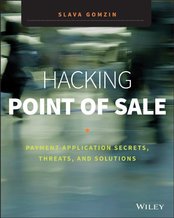| All this code is doing is attempting to connect to the domain we registered: if the connection is not successful it ransoms the system; if it is successful the malware exits. The reason that was suggested is that the domain is a “kill switch” in case something goes wrong, but I now believe it to be a badly thought out anti-analysis. In certain sandbox environments traffic is intercepted by replying to all URL lookups with an IP address belonging to the sandbox rather than the real IP address the URL points to. A side effect of this is if an unregistered domain is queried it will respond as it it were registered (which should never happen). I believe the malware creators were trying to query an intentionally unregistered domain which would appear registered in certain sandbox environments, then once they see the domain responding, they know they’re in a sandbox and the malware exits to prevent further analysis. This technique isn’t unprecedented: the Necurs trojan queries five totally random domains, and if they all return the same IP it exits. However, because WannaCrypt used a single hardcoded domain, my registration of it caused all infections globally to believe they were inside a sandbox and exit... thus we unintentionally prevented the spread and further ransoming of computers infected with this malware. Of course now that we are aware of this, we will continue to host the domain to prevent any further infections from this sample. One thing that is very important to note is our sinkholing only stops this version of the ransomware, and there is nothing stopping them removing the domain check and trying again, so it’s incredibly important that any unpatched systems are patched as quickly as possible. |
|
1 Comment
Leave a Reply. |
Books
 Crypto Basics Crypto Basics
 Bitcoin for Nonmathematicians: Exploring the Foundations of Crypto Payments Bitcoin for Nonmathematicians: Exploring the Foundations of Crypto Payments
 Hacking Point of Sale: Payment Application Secrets, Threats, and Solutions Hacking Point of Sale: Payment Application Secrets, Threats, and Solutions
Recent Posts
Categories
All
Archives
March 2023
|




 RSS Feed
RSS Feed
